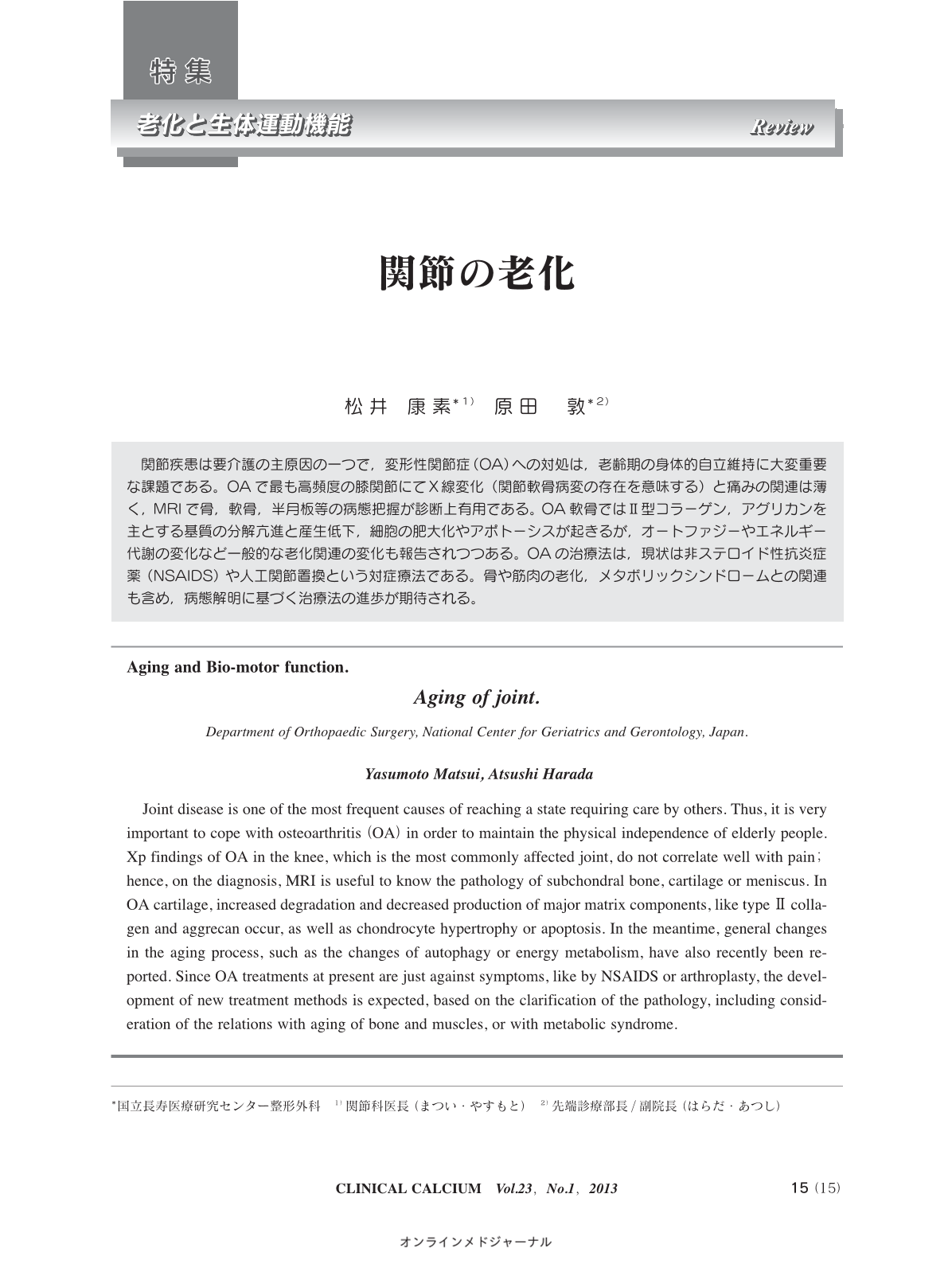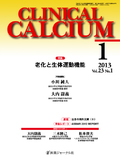Japanese
English
- 有料閲覧
- Abstract 文献概要
- 1ページ目 Look Inside
- 参考文献 Reference
関節疾患は要介護の主原因の一つで,変形性関節症(OA)への対処は,老齢期の身体的自立維持に大変重要な課題である。OAで最も高頻度の膝関節にてX線変化(関節軟骨病変の存在を意味する)と痛みの関連は薄く,MRIで骨,軟骨,半月板等の病態把握が診断上有用である。OA軟骨では II 型コラーゲン,アグリカンを主とする基質の分解亢進と産生低下,細胞の肥大化やアポトーシスが起きるが,オートファジーやエネルギー代謝の変化など一般的な老化関連の変化も報告されつつある。OAの治療法は,現状は非ステロイド性抗炎症薬(NSAIDS)や人工関節置換という対症療法である。骨や筋肉の老化,メタボリックシンドロームとの関連も含め,病態解明に基づく治療法の進歩が期待される。
Joint disease is one of the most frequent causes of reaching a state requiring care by others. Thus, it is very important to cope with osteoarthritis(OA)in order to maintain the physical independence of elderly people. Xp findings of OA in the knee, which is the most commonly affected joint, do not correlate well with pain;hence, on the diagnosis, MRI is useful to know the pathology of subchondral bone, cartilage or meniscus. In OA cartilage, increased degradation and decreased production of major matrix components, like type II collagen and aggrecan occur, as well as chondrocyte hypertrophy or apoptosis. In the meantime, general changes in the aging process, such as the changes of autophagy or energy metabolism, have also recently been reported. Since OA treatments at present are just against symptoms, like by NSAIDS or arthroplasty, the development of new treatment methods is expected, based on the clarification of the pathology, including consideration of the relations with aging of bone and muscles, or with metabolic syndrome.



